University of Tartu
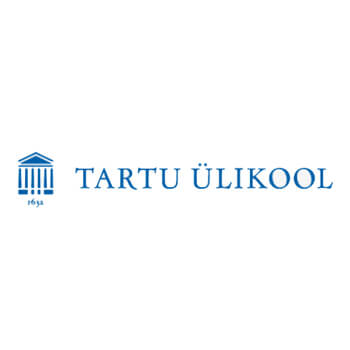
Founded: 1632
Address: Ulikooli 18 - Tartu, Estonia
Phone: +372 737 5100
Address: Ulikooli 18 - Tartu, Estonia
Phone: +372 737 5100
Here you find out University of Tartu complete information about fees, location, degree University of Tartu offers, number, website, and much more. University of Tartu is a leading university in Tartu - Estonia.
You can also find out jobs at University of Tartu for students, teachers, and professors. We also update the database for an internship at University of Tartu for students.
UT is Estonia"s leading centre of research and training. It preserves the culture of the Estonian people and spearheads the country"s reputation in research and provision of higher education. UT belongs to the top 1.2% of world"s best universities.
As Estonia"s national university, UT stresses the importance of international co-operation and partnerships with reputable research universiti...es all over the world. The robust research potential of the university is evidenced by the fact that the University of Tartu has been invited to join the Coimbra Group, a prestigious club of renowned research universities.
UT includes four faculties. To support and develop the professional competence of its students and academic staff, the university has entered into bilateral co-operation agreements with 79 partner institutions in 31 countries.
The University of Tartu was founded in 1632 by the Swedish king Gustavus Adolphus. It was initially called Academia Dorpatensis. The necessary preparations for creating a university in Tartu (then Dorpat) were made by Johan Skytte, governor general of Livonia.
Academia Dorpatensis, modelled after the University of Uppsala in Sweden, was intended to pursue research and advance learning in a wide variety of disciplines. The University of Tartu (UT) has continued to adhere to this approach throughout the centuries, and remains today the only classical university in Estonia. Research at UT focuses on subjects as diverse as medicine and philosophy, genetics and computer science.
The first students enrolled 20-21 April 1632. The opening ceremony of Academia Dorpatensis (Academia Gustaviana) took place on 15 October in the same year. The academy in Tartu functioned with philosophy, law, theology and medical faculties on the basis of of the University of Uppsala privileges. On account of the Russian-Swedish War the University of Tartu moved to Tallinn in 1656 and in 1665 it closed down.
In 1690 Tartu became a university town again. Academia Gustavo-Carolina moved shortly after from Tartu to Pärnu as a result of the coalition against Sweden and the Great Famine of 1695-1697. Academia Gustavo-Carolina, which had opened in Pärnu on 28 August 1699, was closed because of the surrender to Russian forces on 12 August 1710 during the Northern War. According to the terms of the capitulation act the Russians had agreed to keep the university in Pärnu.
In the 17th century, future outstanding Swedish scientists Urban Hiärne, Olof Verelius, Arvid Moller and others studied at the university. Among the academic staff were: Friedrich Menius, professor of history (the history of Livonia, the first scientific approach to Estonian folklore); Sven Dimberg, professor of mathematics (the first in the world to deliver lectures based on Newton"s theory); Olaus Hermelin, professor of rhetoric and poetry; and Lars Micrander, professor of medicine (the founder of balneology, the discoverer of natural mineral water springs).
At the end of the 17th century the university"s mentality and outlook on the world had a strong impact on Descartes" philosophy.
With the opening of Academia Gustaviana"s printing press in 1631 (it was opened at the secondary school of Tartu, the university"s predecessor) the era of book printing in Estonia began. About 1,300 volumes were published.
NB! The dates in this article are given according to the old calendar that was used in Estonia.
At the end of the 18th century the political and educational interests of the Russian central government and the Baltic-German elite coincided. On 21-22 April 1802 the university was reopened in Tartu as a provincial Baltic university dependent upon the local knighthoods - it was entitled Kaiserliche Universität zu Dorpat (also Imperatorskij Derptskij Universitet). The foundation act confirmed by Alexander I, on 12 December 1802, gave the university the legal status of a russian state university, with German as the language of instruction. In the years 1828-1838 future professors for the universities in Russia were taught at the Tartu University Professors" Institute. In 1803 the lectureship of the Estonian language was established and in the year 1838 the Learned Estonian Society (Gelehrte Estnische Gesellschaft) was founded at the university.
Tartu University developed dynamically in the years 1820-1890. The years 1855-1880 were considered to be an inward-looking era of academic life but the graduates, on the contrary, considered it to be a second renaissance. Moritz Hermann Jacobi, the inventor of galvanoplastics; Karl Ernst von Baer, the founder of the theory of evolution and contemporary embryology; Wilhelm Ostwald, the founder of physical chemistry and the discoverer of salt effects; Alexander Schmidt, the founder of the fermentation theory of blood coagulation and blood transfusion principles; and many others studied and taught at Tartu University.
The first student organisations began to appear as corporations of fellow countrymen which were officially banned in the years 1824-1855, but in 1862 the corporate student body was legalised. The student caps worn with organisation colours, and which attracted attention in the streets of Tartu, were one of the symbols of student culture.
In 1870 Estonian students began to get organised, first meeting at literary evenings where chapters of the epic Kalevipoeg were recited. During these evenings the Estonian Students" Society (known as "Vironia" in the years 1873-1881) was established. In 1884, the flag of the Estonian Students" Society - a blue, black and white tricolour - was consecrated.
Tartu University held a monopoly on higher education in the western provinces of the Russian Empire, forming close relationships in the east with the Academy of Sciences in St. Petersburg and in the west with German universities. In the wave of russification which started in 1889, Tartu University was converted into a traditional higher education establishment, Imperatorskij Jur"evskij Universitet. In 1895, Russian was introduced as the language of instruction. In spite of the great changes in the student body and academic teaching staff, Tartu University, as a Russian university, remained an international centre of science. What made Tartu University unique throughout Russia was its role in educating distinguished scientists in every field of research and high-ranking officials for the Empire, especially in the fields of law and diplomacy.
In the turmoil of World War I, the university"s academic life was interrupted by several stages of evacuation of students and professors and the university"s property. In the spring of 1918, the Russian university was closed down and what is known as the "voluntary departure of the Russians" opened up the path to a new provincial university, which was planned to be opened by the German occupation forces - Landesuniversität in Dorpat, in the Baltic Duchy. It was called the Land University, which was opened on 15 September 1918, but after a couple of months it was forced to put an end to its activities. On 27 November 1918, the commander of the military forces delegated power over Tartu University to a commission formed by the Estonian Provisional Government.
NB! Dates up until 1 February 1918 are given according to the old calendar.
Preparatory work to the opening of the university had already started in March 1918. The head of the commission formed by the Estonian Provisional Government, Peeter Põld, was appointed the university"s curator (later a professor of pedagogy, the Pro-Rector, and a doctor honoris causa). On 1 December 1919 the university opened its doors as Tartu University of the Republic of Estonia with Estonian as the language of instruction, where new subjects that laid the basis for the development and research of national Estonian culture were taught. At first there were not enough lecturers and in order to alleviate the situation scientists and lecturers from abroad were invited: Lauri Ketttunen, Ilmari Manninen, Aarne Miikael Tallgren and Arno Rafael Cederberg from Finland; Johannes Gabriel Granö and Sten Karling from Sweden; and Walter Anderson and others from Germany.
In the first Soviet academic year of 1940/1941 the student corporations and academic societies were closed, and scientific contacts with Western European centres of research and universities were interrupted. The curricula of Tartu University were replaced by the common syllabi of the Soviet Union: a course system was adopted and obligatory political subjects based on the new Marxist-Leninist ideology, including the history of the USSR, were introduced.
The German occupation government"s Ostland-Universität in Dorpat with German as the language of instruction was planned to serve the whole Baltic area. But taking into consideration the needs of the time, the university was opened as Tartu University of the Estonian Self-Government with instruction in Estonian and where the University Act of 1938 regulated academic life. During the war the faculties of medicine, veterinary medicine and agriculture were given priority status.
During World War 2 the university lost 22 buildings, a considerable amount of property, the accommodation of its academic and administrative staff, and libraries.
In the autumn of 1944 the incomplete structural reforms, interrupted in the summer of 1941, were continued. The university was subordinated to the People"s Education Commissariat of the Estonian SSR and from 1946 to the Ministry of Higher Education of the Soviet Union.
The political cataclysms and repressions also affected the university. On 15 May 1950 one of the major symbols of the old university - the monument to Gustav II Adolf, the King of Sweden, erected in 1928 (sculptor Otto Strandman) - was removed.
Even in the 1960s the majority of the professors of Tartu State University belonged to the generation who had received an education at Tartu University in the Republic of Estonia and thus were bearers of the continuity of traditions in the process of instruction and scientific research.
A very specific feature characterised Tartu State University - there were unique academics in specialised fields of science and founders of scientific schools of thought who won world renown: linguist Johannes Voldemar Veski; the founder of structural semiotics and the Tartu School of Semiotics Yuri Lotman; linguist, the founder of Estonian Phonetics and the Finno-Ugric School Paul Ariste; polyglot and linguist of Oriental languages Pent Nurmekund; art historian Voldemar Vaga; botanist and specialist in biogeography Viktor Masing; surgeon Artur Linkberg; physiologist Elise Käer-Kingsepp and many others.
The mentality and positive attitudes of the students, academic staff and researchers at the Estonian national university helped to preserve its atmosphere and restore Tartu University as the university of the Republic of Estonia. 1989-1992 were years of structural changes, restoring the content of academic studies and old traditions.
Tartu University can look back on its 370-year history, symbolised by the statue of Gustav II Adolf, which was re-erected on its original site in Royal Square on St. George"s Day in 1992 (created by Elisabeth Tebelius-Myren in 1991 from a plaster figure by Fogelberg) to defend the continuity of alma mater Tartuensis.
The Tartu University Main Building (built in 1805-1809 in the classical style) houses the oldest museum at Tartu University - the Art Museum. In the Museum of Tartu University History , housed in the ancient Dome Church on Toome Hill, visitors can familiarise themselves with the history of the university. Johann Karl Simon Morgenstern opened the University Library in the same building 200 years ago. The university"s Botanical Gardens , founded in 1803-1806, add charm to the ruins of the Tartu town wall and the bastion on the right bank of the River Emajõgi.
Student organisations preserve the ideas and keep the traditions of the "student kingdom" of Tartu alive.
Tartu University is the mother university to Tallinn Technical University and Estonian University of Life Sciences.
You can also find out jobs at University of Tartu for students, teachers, and professors. We also update the database for an internship at University of Tartu for students.
UT is Estonia"s leading centre of research and training. It preserves the culture of the Estonian people and spearheads the country"s reputation in research and provision of higher education. UT belongs to the top 1.2% of world"s best universities.
As Estonia"s national university, UT stresses the importance of international co-operation and partnerships with reputable research universiti...es all over the world. The robust research potential of the university is evidenced by the fact that the University of Tartu has been invited to join the Coimbra Group, a prestigious club of renowned research universities.
UT includes four faculties. To support and develop the professional competence of its students and academic staff, the university has entered into bilateral co-operation agreements with 79 partner institutions in 31 countries.
The University of Tartu was founded in 1632 by the Swedish king Gustavus Adolphus. It was initially called Academia Dorpatensis. The necessary preparations for creating a university in Tartu (then Dorpat) were made by Johan Skytte, governor general of Livonia.
Academia Dorpatensis, modelled after the University of Uppsala in Sweden, was intended to pursue research and advance learning in a wide variety of disciplines. The University of Tartu (UT) has continued to adhere to this approach throughout the centuries, and remains today the only classical university in Estonia. Research at UT focuses on subjects as diverse as medicine and philosophy, genetics and computer science.
The first students enrolled 20-21 April 1632. The opening ceremony of Academia Dorpatensis (Academia Gustaviana) took place on 15 October in the same year. The academy in Tartu functioned with philosophy, law, theology and medical faculties on the basis of of the University of Uppsala privileges. On account of the Russian-Swedish War the University of Tartu moved to Tallinn in 1656 and in 1665 it closed down.
In 1690 Tartu became a university town again. Academia Gustavo-Carolina moved shortly after from Tartu to Pärnu as a result of the coalition against Sweden and the Great Famine of 1695-1697. Academia Gustavo-Carolina, which had opened in Pärnu on 28 August 1699, was closed because of the surrender to Russian forces on 12 August 1710 during the Northern War. According to the terms of the capitulation act the Russians had agreed to keep the university in Pärnu.
In the 17th century, future outstanding Swedish scientists Urban Hiärne, Olof Verelius, Arvid Moller and others studied at the university. Among the academic staff were: Friedrich Menius, professor of history (the history of Livonia, the first scientific approach to Estonian folklore); Sven Dimberg, professor of mathematics (the first in the world to deliver lectures based on Newton"s theory); Olaus Hermelin, professor of rhetoric and poetry; and Lars Micrander, professor of medicine (the founder of balneology, the discoverer of natural mineral water springs).
At the end of the 17th century the university"s mentality and outlook on the world had a strong impact on Descartes" philosophy.
With the opening of Academia Gustaviana"s printing press in 1631 (it was opened at the secondary school of Tartu, the university"s predecessor) the era of book printing in Estonia began. About 1,300 volumes were published.
NB! The dates in this article are given according to the old calendar that was used in Estonia.
At the end of the 18th century the political and educational interests of the Russian central government and the Baltic-German elite coincided. On 21-22 April 1802 the university was reopened in Tartu as a provincial Baltic university dependent upon the local knighthoods - it was entitled Kaiserliche Universität zu Dorpat (also Imperatorskij Derptskij Universitet). The foundation act confirmed by Alexander I, on 12 December 1802, gave the university the legal status of a russian state university, with German as the language of instruction. In the years 1828-1838 future professors for the universities in Russia were taught at the Tartu University Professors" Institute. In 1803 the lectureship of the Estonian language was established and in the year 1838 the Learned Estonian Society (Gelehrte Estnische Gesellschaft) was founded at the university.
Tartu University developed dynamically in the years 1820-1890. The years 1855-1880 were considered to be an inward-looking era of academic life but the graduates, on the contrary, considered it to be a second renaissance. Moritz Hermann Jacobi, the inventor of galvanoplastics; Karl Ernst von Baer, the founder of the theory of evolution and contemporary embryology; Wilhelm Ostwald, the founder of physical chemistry and the discoverer of salt effects; Alexander Schmidt, the founder of the fermentation theory of blood coagulation and blood transfusion principles; and many others studied and taught at Tartu University.
The first student organisations began to appear as corporations of fellow countrymen which were officially banned in the years 1824-1855, but in 1862 the corporate student body was legalised. The student caps worn with organisation colours, and which attracted attention in the streets of Tartu, were one of the symbols of student culture.
In 1870 Estonian students began to get organised, first meeting at literary evenings where chapters of the epic Kalevipoeg were recited. During these evenings the Estonian Students" Society (known as "Vironia" in the years 1873-1881) was established. In 1884, the flag of the Estonian Students" Society - a blue, black and white tricolour - was consecrated.
Tartu University held a monopoly on higher education in the western provinces of the Russian Empire, forming close relationships in the east with the Academy of Sciences in St. Petersburg and in the west with German universities. In the wave of russification which started in 1889, Tartu University was converted into a traditional higher education establishment, Imperatorskij Jur"evskij Universitet. In 1895, Russian was introduced as the language of instruction. In spite of the great changes in the student body and academic teaching staff, Tartu University, as a Russian university, remained an international centre of science. What made Tartu University unique throughout Russia was its role in educating distinguished scientists in every field of research and high-ranking officials for the Empire, especially in the fields of law and diplomacy.
In the turmoil of World War I, the university"s academic life was interrupted by several stages of evacuation of students and professors and the university"s property. In the spring of 1918, the Russian university was closed down and what is known as the "voluntary departure of the Russians" opened up the path to a new provincial university, which was planned to be opened by the German occupation forces - Landesuniversität in Dorpat, in the Baltic Duchy. It was called the Land University, which was opened on 15 September 1918, but after a couple of months it was forced to put an end to its activities. On 27 November 1918, the commander of the military forces delegated power over Tartu University to a commission formed by the Estonian Provisional Government.
NB! Dates up until 1 February 1918 are given according to the old calendar.
Preparatory work to the opening of the university had already started in March 1918. The head of the commission formed by the Estonian Provisional Government, Peeter Põld, was appointed the university"s curator (later a professor of pedagogy, the Pro-Rector, and a doctor honoris causa). On 1 December 1919 the university opened its doors as Tartu University of the Republic of Estonia with Estonian as the language of instruction, where new subjects that laid the basis for the development and research of national Estonian culture were taught. At first there were not enough lecturers and in order to alleviate the situation scientists and lecturers from abroad were invited: Lauri Ketttunen, Ilmari Manninen, Aarne Miikael Tallgren and Arno Rafael Cederberg from Finland; Johannes Gabriel Granö and Sten Karling from Sweden; and Walter Anderson and others from Germany.
In the first Soviet academic year of 1940/1941 the student corporations and academic societies were closed, and scientific contacts with Western European centres of research and universities were interrupted. The curricula of Tartu University were replaced by the common syllabi of the Soviet Union: a course system was adopted and obligatory political subjects based on the new Marxist-Leninist ideology, including the history of the USSR, were introduced.
The German occupation government"s Ostland-Universität in Dorpat with German as the language of instruction was planned to serve the whole Baltic area. But taking into consideration the needs of the time, the university was opened as Tartu University of the Estonian Self-Government with instruction in Estonian and where the University Act of 1938 regulated academic life. During the war the faculties of medicine, veterinary medicine and agriculture were given priority status.
During World War 2 the university lost 22 buildings, a considerable amount of property, the accommodation of its academic and administrative staff, and libraries.
In the autumn of 1944 the incomplete structural reforms, interrupted in the summer of 1941, were continued. The university was subordinated to the People"s Education Commissariat of the Estonian SSR and from 1946 to the Ministry of Higher Education of the Soviet Union.
The political cataclysms and repressions also affected the university. On 15 May 1950 one of the major symbols of the old university - the monument to Gustav II Adolf, the King of Sweden, erected in 1928 (sculptor Otto Strandman) - was removed.
Even in the 1960s the majority of the professors of Tartu State University belonged to the generation who had received an education at Tartu University in the Republic of Estonia and thus were bearers of the continuity of traditions in the process of instruction and scientific research.
A very specific feature characterised Tartu State University - there were unique academics in specialised fields of science and founders of scientific schools of thought who won world renown: linguist Johannes Voldemar Veski; the founder of structural semiotics and the Tartu School of Semiotics Yuri Lotman; linguist, the founder of Estonian Phonetics and the Finno-Ugric School Paul Ariste; polyglot and linguist of Oriental languages Pent Nurmekund; art historian Voldemar Vaga; botanist and specialist in biogeography Viktor Masing; surgeon Artur Linkberg; physiologist Elise Käer-Kingsepp and many others.
The mentality and positive attitudes of the students, academic staff and researchers at the Estonian national university helped to preserve its atmosphere and restore Tartu University as the university of the Republic of Estonia. 1989-1992 were years of structural changes, restoring the content of academic studies and old traditions.
Tartu University can look back on its 370-year history, symbolised by the statue of Gustav II Adolf, which was re-erected on its original site in Royal Square on St. George"s Day in 1992 (created by Elisabeth Tebelius-Myren in 1991 from a plaster figure by Fogelberg) to defend the continuity of alma mater Tartuensis.
The Tartu University Main Building (built in 1805-1809 in the classical style) houses the oldest museum at Tartu University - the Art Museum. In the Museum of Tartu University History , housed in the ancient Dome Church on Toome Hill, visitors can familiarise themselves with the history of the university. Johann Karl Simon Morgenstern opened the University Library in the same building 200 years ago. The university"s Botanical Gardens , founded in 1803-1806, add charm to the ruins of the Tartu town wall and the bastion on the right bank of the River Emajõgi.
Student organisations preserve the ideas and keep the traditions of the "student kingdom" of Tartu alive.
Tartu University is the mother university to Tallinn Technical University and Estonian University of Life Sciences.
Read More
Details:
LeaderShip:
Fees:
Time:
Phone Number: +372 737 5100
City: Tartu
Fees:
Time:
Phone Number: +372 737 5100
City: Tartu
Timing:
Country: Estonia
Staff: 3800
Website: http://www.ut.ee
Country: Estonia
Staff: 3800
Website: http://www.ut.ee
Subjects:
Video:
Jobs in University of Tartu
Currently, there is no job opening in University of Tartu as per our database.


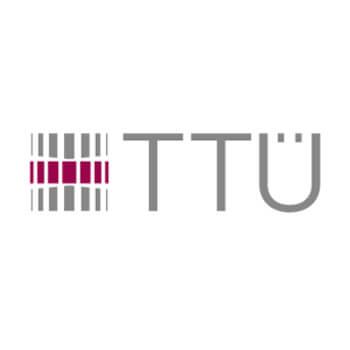
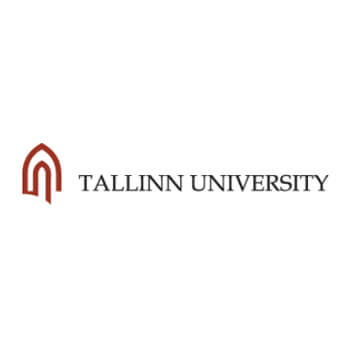

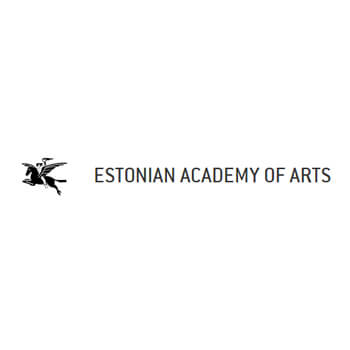
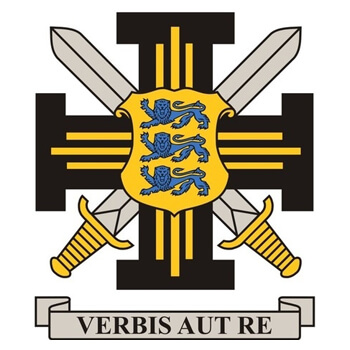
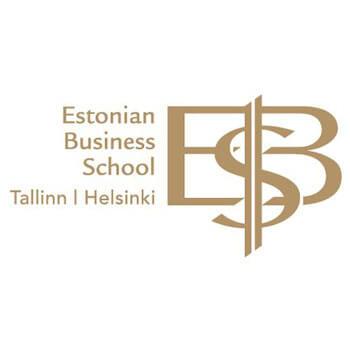
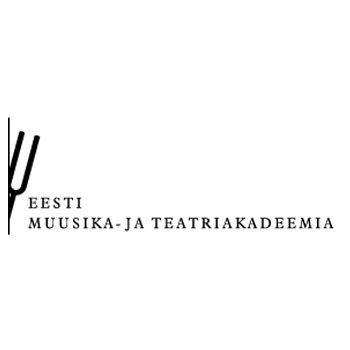










Leave a Reply